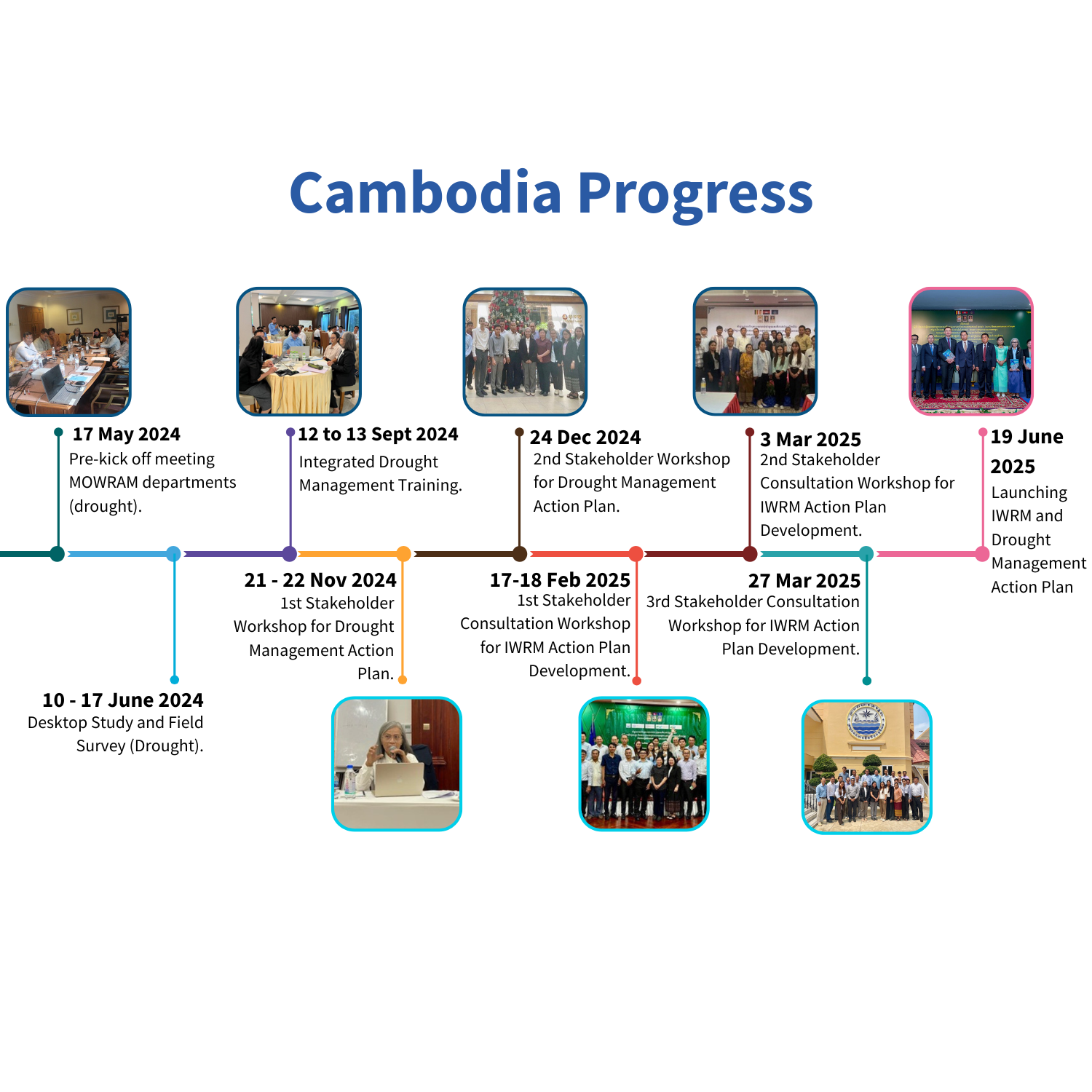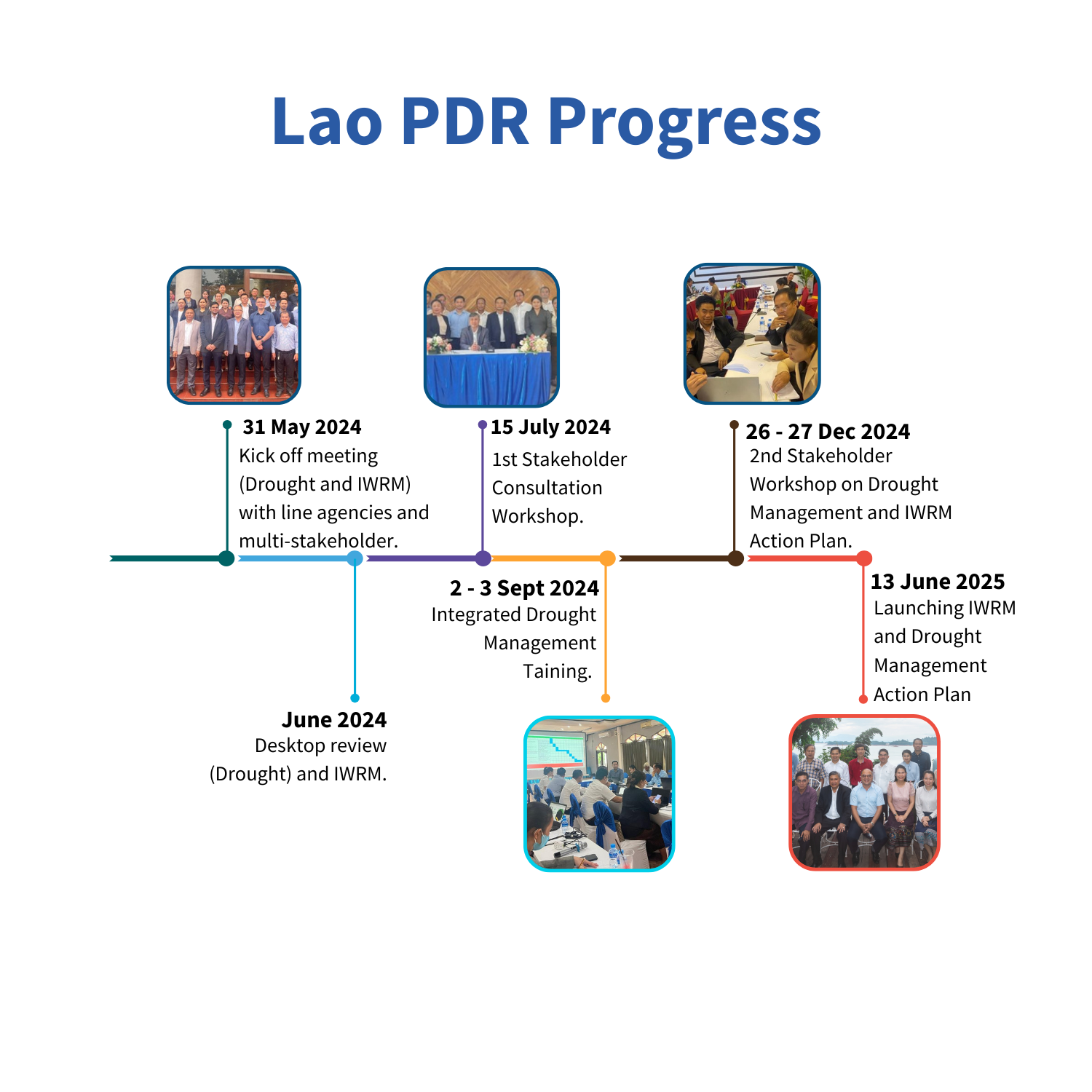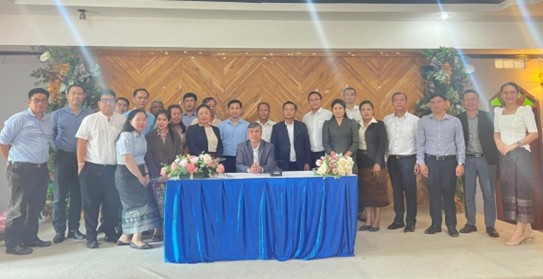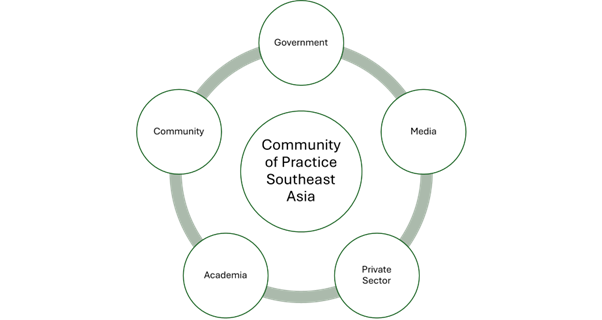CREWS programs are supported with three Implementing Partners: The United Nations Office for Disaster Risk Reduction (UNDRR), the World Bank Global Facility for Disaster Reduction and Recovery (GFDRR) and the World Meteorological Organization (WMO).
Background
In Southeast Asia, drought is a recurring natural disaster, especially in Cambodia and Lao People’s Democratic Republic (PDR), affecting the country's agricultural sector, food security, and livelihoods of its rural communities and economy.
Considering the escalating frequency and intensity of droughts in Southeast Asia, the Climate Risk and Early Warning Systems (CREWS) program has taken the initiative to enhance the capacity of national institutions to provide hydrometeorological, early action, and protection to vulnerable populations within these countries.
The CREWS project aims to strengthen the National Meteorological and Hydrological Services (NMHSs) and National Disaster Management Offices (NDMOs) in Lao PDR and Cambodia by addressing gaps in their early warning systems. Enhancements focus on four key pillars: risk knowledge, monitoring and warning services, dissemination and communication, and response capability, ensuring a more effective and coordinated approach to disaster preparedness.
Beyond improving early warning systems, the project also emphasizes the need for action plans on drought management and the integration of water resources management (IWRM) as essential tools for building long-term resilience against water-related risks.
The project has five broad outcomes, namely:
- Outcome 1: Strengthen institutional capacities through improved governance mechanisms.
- Outcome 2: Enhanced capacity of NMHSs to provide forecasts and warnings.
- Outcome 3: NMHSs’ Information and Communication technology strengthened.
- Outcome 4: Enhanced preparedness and response capability to act upon warning and risk information to minimize impact of disasters on lives, livelihoods and socio-economic systems.
- Outcome 5: Improved integration of gender and vulnerable groups across the Early Warning – Early Action (EW-EA) value chain.
Reinforcing the capacities and enhancing the early warning systems in Cambodia and Lao PDR
Started in March 2024, the CREWS program began to implement by working closely with Global Water Partnership Southeast Asia (GWP-SEA) and GWP Cambodia and GWP Lao PDR, focusing on Integrated Water Resources Management (IWRM) and Drought Management through several essential activities such as formation of Working Group and Project Kick-off meeting, by mapping the multidisciplinary stakeholders and agreed upon the program plan activities.
Some key activities include the National IWRM issues and challenges assessment through literature studies, drafting the report and Action Plan Outline and conducting the national multi-stakeholder consultation workshops on IWRM issues. These also include the plan on endorsement and launching the IWRM Action Plan.
The IWRM Action Plan development aims to develop a comprehensive and coherent IWRM action plan for Cambodia and Lao PDR that will be an integrated water sector, land use and climate for sustainable water resources management and resilient.
In parallel, the program on the drought component aims to develop a comprehensive national action plan that not only helps manage drought risks but also strengthens Cambodia and Lao PDR’s resilience against future droughts. This plan will serve as a crucial guide to mitigating the impacts of drought and boosting the country’s adaptive capacity.

For drought management and adaptation action plan development, few key activities were held such as Capacity Building on Integrated Drought Management , through a two-days training led by drought experts from Integrated Drought Management Programme (IDMP) and Global Water Partnership Organisation (GWP) networks.
Additionally, national drought risk assessments were conducted through a combination of literature review, field survey, drought risks mapping, and drafting report and Action Plan Outline. These outputs - report preparation and Action Plan Outline - were further refined and aligned through a stakeholder consultation process.

Furthermore, in developing the Drought Management Action Plan 2025-2030, several key activities were undertaken. These included drafting of the Drought Action Plan and outlining the institutional coordination mechanisms. The process also involved finalizing the drought action plan and institutional coordination mechanisms, along with preparation for official endorsement and a national launching event.
Stakeholders
The CREWS program in Cambodia and Lao PDR exemplifies the power of multi-stakeholder collaboration in tackling climate-related challenges.
 In Cambodia, key players such as the Ministry of Water Resources and Meteorology, the Cambodia National Mekong Committee, the Tonle Sap Authority, and the National Committee for Disaster Management, among others, have worked together to strengthen the country’s early warning systems and climate resilience.
In Cambodia, key players such as the Ministry of Water Resources and Meteorology, the Cambodia National Mekong Committee, the Tonle Sap Authority, and the National Committee for Disaster Management, among others, have worked together to strengthen the country’s early warning systems and climate resilience.
Similarly, in Lao PDR, a wide-ranging coalition of government ministries—including the Ministry of Natural Resources and Environment, Ministry of Agriculture and Forestry, Ministry of Energy and Mines, and the Ministry of Public Works and Transportation—alongside national academic institutions like the National University of Laos and private sector partners, have contributed to developing integrated climate risk management systems. 
Through this inclusive approach, both countries have made significant strides in improving their capacity to anticipate and respond to climate impacts, ensuring that vulnerable communities are better prepared for extreme weather events and long-term environmental shifts.
Community of Practices (CoP)

In collaboration with United Nations Convention to Combat Desertification (UNCCD), Integrated Drought Management Programme (IDMP), Global Water Partnership Organisation (GWPO), GWP Southeast Asia, and GWP Cambodia and GWP Lao PDR, a Community of Practices (CoP) proposed to engage more water and drought management experts, practitioners and other multi-stakeholders from different multidisciplinary levels (national, subnational and community), especially who are involved in IWRM and drought management action plan development. It also aims to establish synergies between stakeholders in the Southeast Asia region and to exchange knowledge and experiences with other countries in the Asia region.
By leveraging structured knowledge-sharing practices, it can capture and disseminate valuable insights, and enhance lessons learned. Communication within CoP ensures alignment, fosters engagement, and builds a sense of shared purpose among members, ultimately strengthening the member's ability to adapt and thrive over time.
Regional Learning Exchange Workshop on Drought Management and IWRM in Cambodia and Lao PDR
To strengthen institutional capacities in Cambodia and Lao PDR on IWRM and drought, GWPO, GWP-SEA, with the Cambodia and Lao Water Partnerships, supports WMO and the governments of Cambodia and Lao PDR in developing drought management and IWRM policies for their ministries and stakeholders, a Regional Learning Exchange Workshop was designed as a showcase for learning the experiences and the action plans or policy frameworks result of the countries.

A two-day Regional Learning Exchange Workshop was held in Bangkok, Thailand from 8 – 9 April 2025 was also identified potential collaborations for future implementation of the CREWS deliverables.
Attended by 30 participants from various sectors, including government representatives from Cambodia and Lao PDR, climate service experts, regional organizations, and development partners like the UN Environment Programme, FAO, Asian Development Bank (ADB), IUCN, Resilience Development Initiative (RDI), UN Convention to Combat Desertification, Asian Disaster Preparedness Center (ADPC), United Nations Office for Disaster Risk Reduction (UNDRR), CIRAD-SEI – Stockholm Environment Institute-AIT, the World Bank, United Nations ESCAP, United Nations Global Compact, the Regional Learning Exchange Workshop comprise with two main segments:
- The action plan or policy framework (IWRM and Drought Management) and lessons learned during the process through a case clinic.
- Knowledge management and communication aspect, and Community of Practice of IWRM and drought for Southeast Asia region.
To learn more about the CREWS Program in Southeast Asia, visit the related information on the panel right side (desktop view), or at the bottom of the page (smartphone view).
